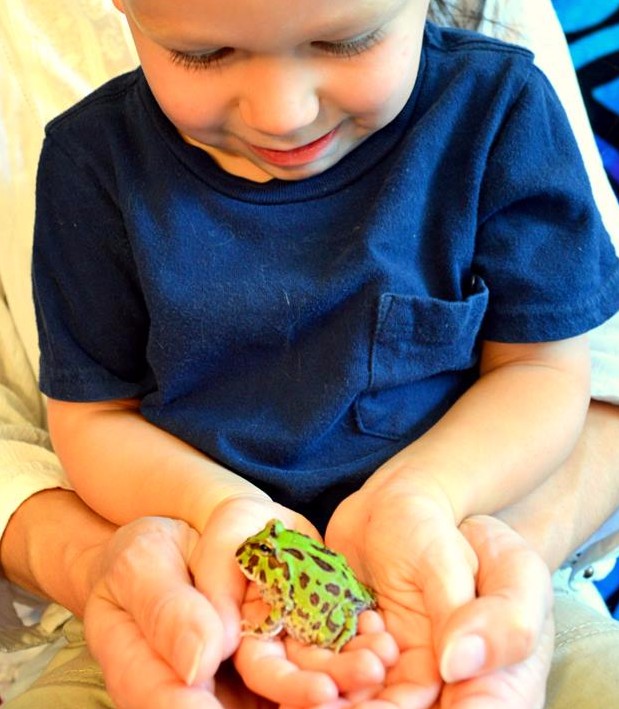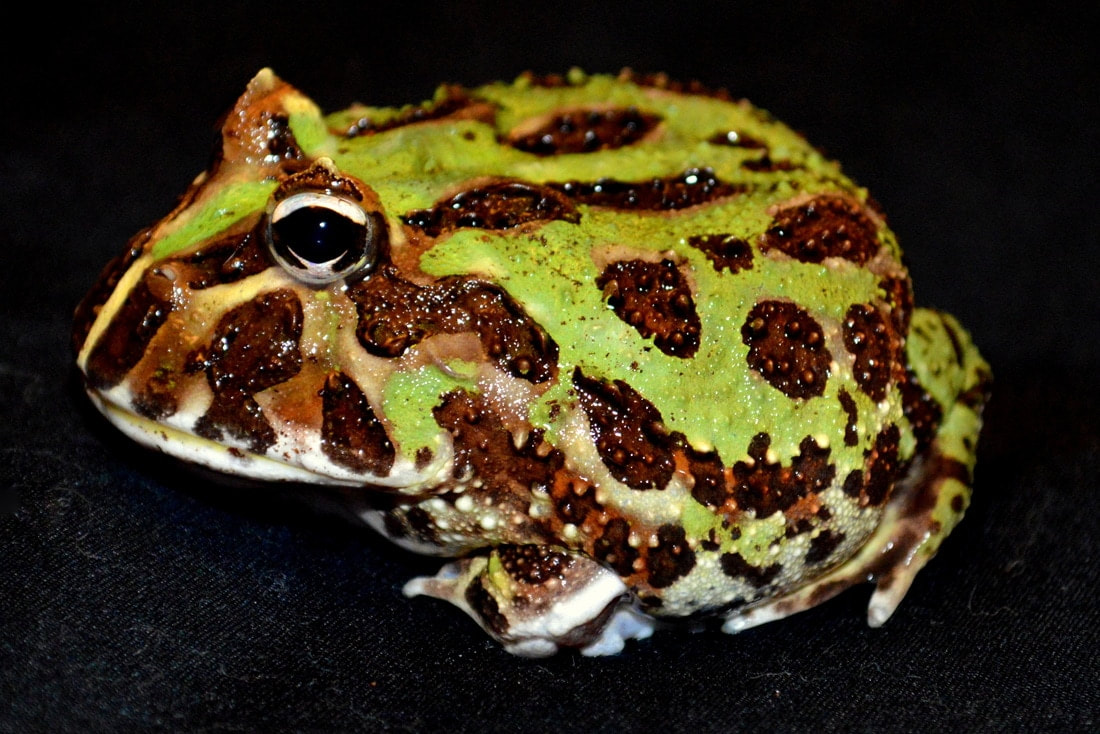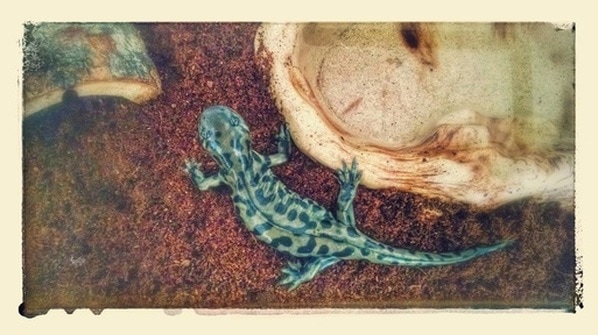South American Horned Frog generally refers to one of two species of frog, the Ornate Horned Frog and Cranwell’s Horned Frog. Ornate Horned Frog tends to be the slightly larger species. Females are generally larger than males. Once they are full grown, males have nuptial pads on the inside of their hands and males will tend to be more vocal. In their native environment, the local people refer to them as “ezcuerzos” which means “toad” in Spanish. These burrowing amphibians are actually frogs, not toads, as they have teeth that are connected to their jaw. True toads do not have teeth. It is not uncommon for these frogs to break skin if they bite a person. When the ground is dry and/or food is scarce, South American Horned frogs will develop a tough outer skin, like a cocoon to keep themselves from drying out. Once they are rehydrated, they will shed and eat this protective layer. This process is known as estivation. Quick Overview
South American Horned Frogs are popular as pets due to their simple care requirements. A 10 gallon tank is large enough to keep one individual. Multiple frogs should not be housed together as they may cause injury to each other. Some frogs may appreciate a shallow water dish, but they do not require one as they absorb moisture through their skin from the substrate. They do require areas to hide such as a log or a fake plant. Live plants that are not toxic can also be used in the enclosure with the understanding that the frog may occasionally dig up the plant as they love to burrow in the substrate. Frogs do not require additional heating or UVB lighting as long as the enclosure is in an area that is room temperature. UVB lighting should not be used with albino frogs as this may cause blindness. Most frogs have a voracious appetite so feeding should be scaled back if they begin appearing too plump. Smaller frogs will require smaller prey items. At Ferrets and Friends, LLC our South American Horned Frogs are fed two to three times per week. Our larger frog eats about five large sized crickets each week while our younger frog eats about three medium sized crickets. These crickets are dusted with a calcium with D3 supplement. Animal Care Cost Example (2017 prices): Set up
Animal Care Cost Example (2017 prices): Annual Cost
0 Comments
Tiger Salamanders are tied with Giant Salamanders for the record on the largest terrestrial salamander species, reaching lengths of up to 14 inches. They can be found in the woodland areas throughout most of North America, from northern regions of Mexico to the southern regions of Canada. Their color patterns may vary with specific species, but most are dark brown in color with lighter marking that can range from a muted grey to a bright yellow. As a burrowing species, Tiger Salamanders are rarely seen out in the open. They prefer to spend most of their time about two feet under the surface. These voracious predators consume a variety of insects, slugs, and earthworms. Like many other amphibians, Tiger Salamanders will eat their skin after shedding. Tiger Salamanders reach sexual maturity after the first year. Females tend to have a more rounded figure. Males tend to have a slimmer build with flat tales. Their cloaca may appear swollen compared to the females. The Tiger Salamander is considered the State Amphibian of both Colorado and Kansas. In many places it is illegal to sell adult specimens to discourage the pet trade from taking specimens from the wild. The state of Colorado also has limitations on which species can be possessed in captivity. Quick Overview
Tiger Salamanders are popular as pets due to their simple care requirements. A 10 gallon tank is large enough to keep one individual. Multiple salamanders can be housed together, but they should be similar in size and feeding should be monitored to make sure that each individual gets enough to eat. Some salamanders may appreciate a shallow water dish, but they do not require one as they absorb moisture through their skin from the substrate. They appreciate areas to hide such as a log or a fake plant, but most will burrow in the substrate. Live plants that are not toxic can also be used in the enclosure with the understanding that the salamander may occasionally dig up the plant. They do not require additional heating or UVB lighting as long as the enclosure is in an area that is room temperature. At Ferrets and Friends, LLC our Tiger Salamanders are fed two to three times per week. They each eat about three to five crickets per feeding, depending on their appearance. Tiger Salamanders will become obese if they are overfed. Animal Care Cost Example (2017 Prices): Set Up
Animal Care Cost Example (2017 Prices): Annual Cost
|
About the blogFerrets and Friends, LLC has four writers bringing you information on a variety of topics from pets to wildlife, education to conservation, and from new developments in our business to information about our industry. Learn something new each week! Archives
August 2020
Categories
All
|



 RSS Feed
RSS Feed